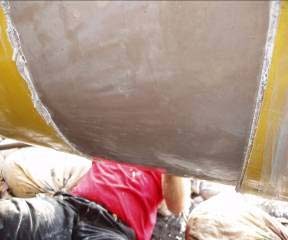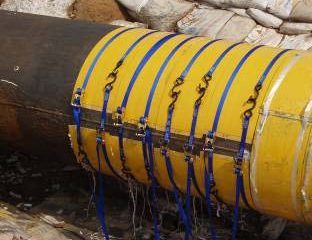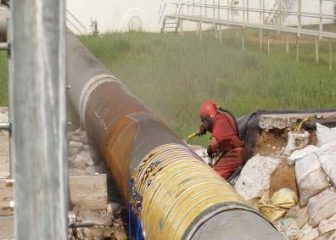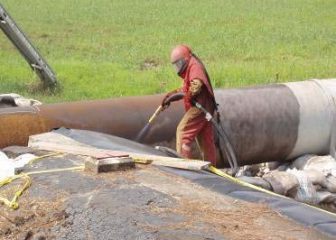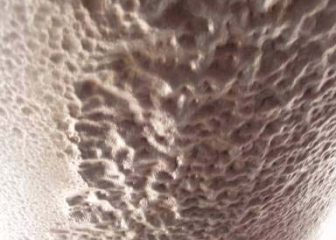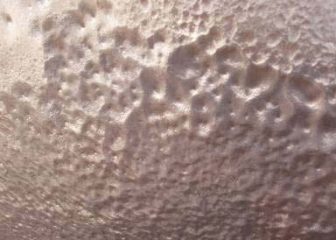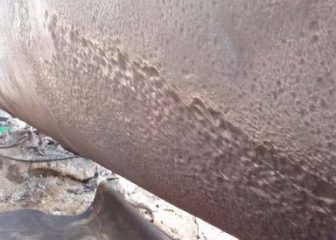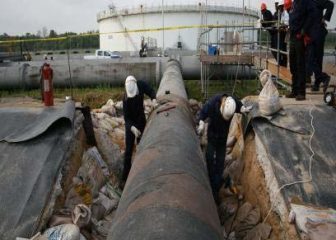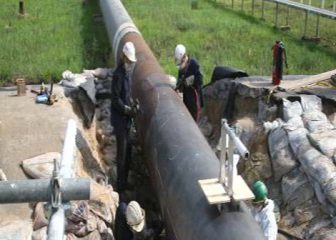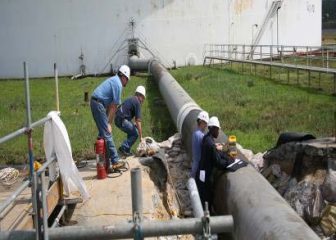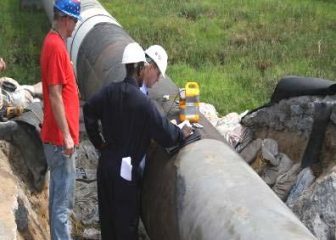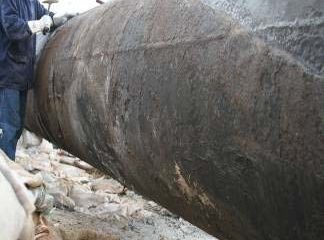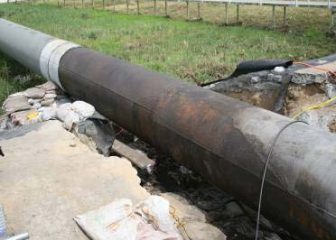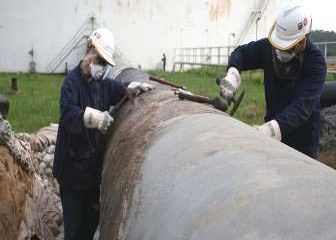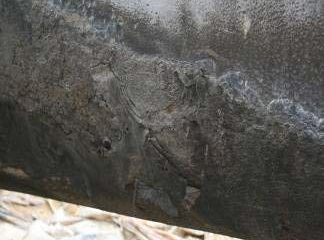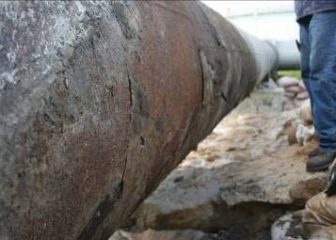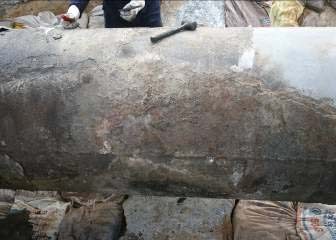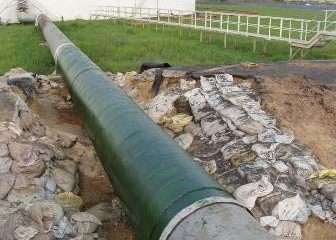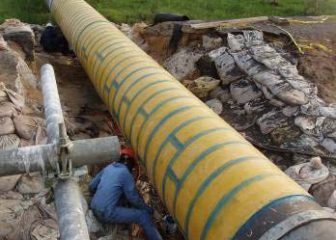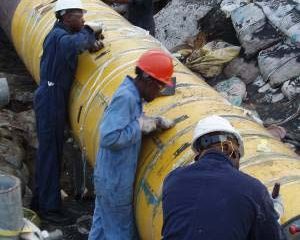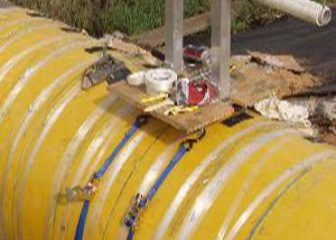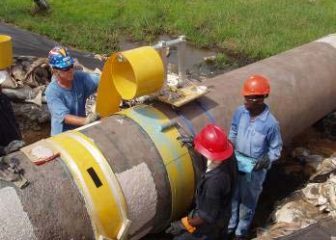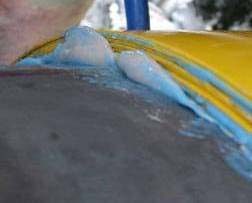Africa
Pipe Details
- 42-inch (1,067 mm) suction line at a storage terminal
- Extensive pitting and corrosion
Summary
- A 42-inch (1,067-mm) suction line at a storage terminal had sustained extensive pitting and corrosion – in some places, resulting in 80% metal loss – and needed immediate repair.
- Extensive corrosion and pitting required installers to prepare the pipe for repairs by hand.
- CSNRI trained technicians installed the Clock Spring repair sleeves using a spool feeder
- Line remained in service during repair
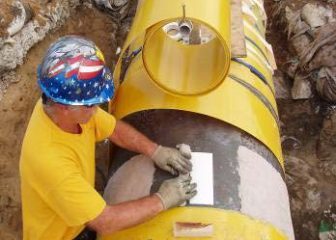
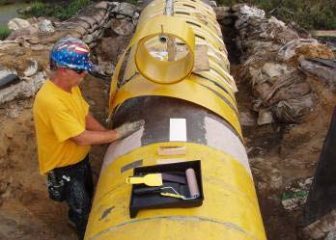
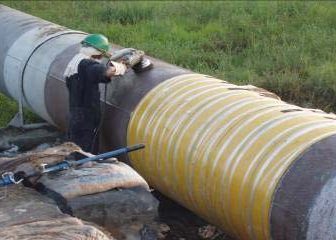
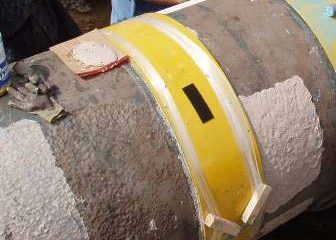
A 42-inch (1,067 mm) suction line at a storage terminal had sustained extensive pitting and corrosion – in some places, resulting in 80% metal loss – and needed immediate repair. The corrosion occurred in areas in which the pipe coating had not prevented moisture ingress. Where moisture was entrapped, there was considerable galvanic corrosion.
Unfortunately, extensive corrosion was not the only concern. When the pipe was excavated, large areas were coated with “coal tar,” which had to be removed carefully by hand, followed by the removal of an additional layer of corrosion underneath. This painstaking process was necessary to avoid further damage to the pipe.
Once the coating and corrosion scale were removed manually, a nondestructive test (NDT) inspection was carried out to determine an accurate measurement of the remaining wall thicknesses. The NDT inspection pinpointed the worst areas of the pipe as well as areas where power tools could be used to prepare the pipe for the Clock Spring repair without further penetration/perforation of the remaining wall thickness. The CSNRI trained team used pneumatic descaling guns and 3-inch by 7-inch (76-mm by 178-mm) grinding machines fitted with wire wheels to prepare the pipe surface to a NACE 3 standard. Electrical supply limitations meant only three machines could operate at a time.
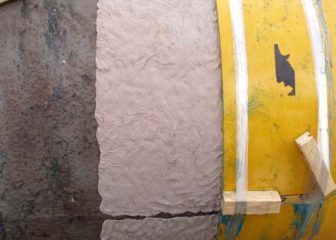
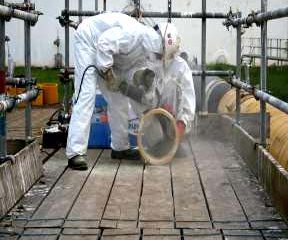
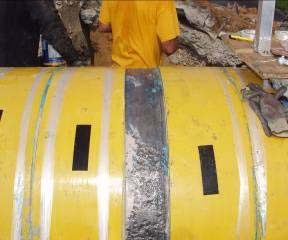
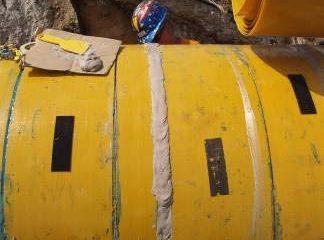
Pitting and general corrosion were extensive, with most of the severely corroded pipe previously buried in the concrete bund wall. The surface extent of the corrosion and the considerable length of the pipeline that needed to be repaired led to a decision to use sand-blasting for the remaining pipe section length.
The extent of corrosion had affected the ovality of the pipe, and filler was needed to bring the surface of the pipe back to its original outer diameter. The filler was held within a 42-inch (1,067 mm) mold and secured with tensioning straps to ensure even distribution around the pipe and into the corrosion pits. Surplus filler is extruded from the mold, leaving a uniform surface for the Clock Spring repair. This procedure was carried out on all longitudinal and spiral weld seams to avoid gaps and tenting underneath the Clock Spring coil. The severe circumferential extent of the corrosion made it necessary to apply filler to almost three quarters of the overall pipe circumference in some areas.
After the filler compound cured, the installation team removed the tensioning straps and mold and cleaned the pipe surface with solvent to remove grease or other forms of contamination deposited during the blasting process.
With the pipe properly cleaned, the team applied the Clock Spring starter pad and began installation of the Clock Spring units using a spool feeder because of the pipe diameter and limited clearance underneath the line. Once the coil was wound around the pipe and adhesive was applied to the complete surface area of the coil, installers slid the sleeve into place over the filler and onto the starter pad. The coils were installed side by side to accommodate the complete repair length and external extent of the corrosion. Each coil was tightened using the cinch bar to extrude excess filler and adhesive and ensure all the voids were filled completely.
During the 2 hours while the units cured, installers removed the excess filler and adhesive. The final step of the installation procedure was to apply a suitable corrosion coating over the complete length of the reinforcement to protect the repair.
